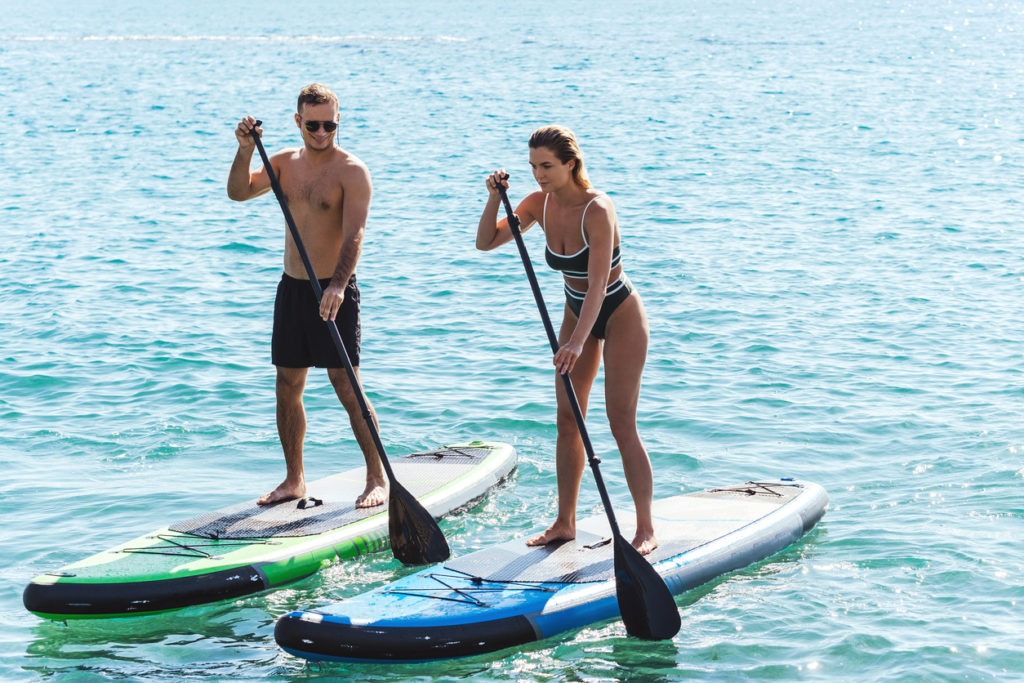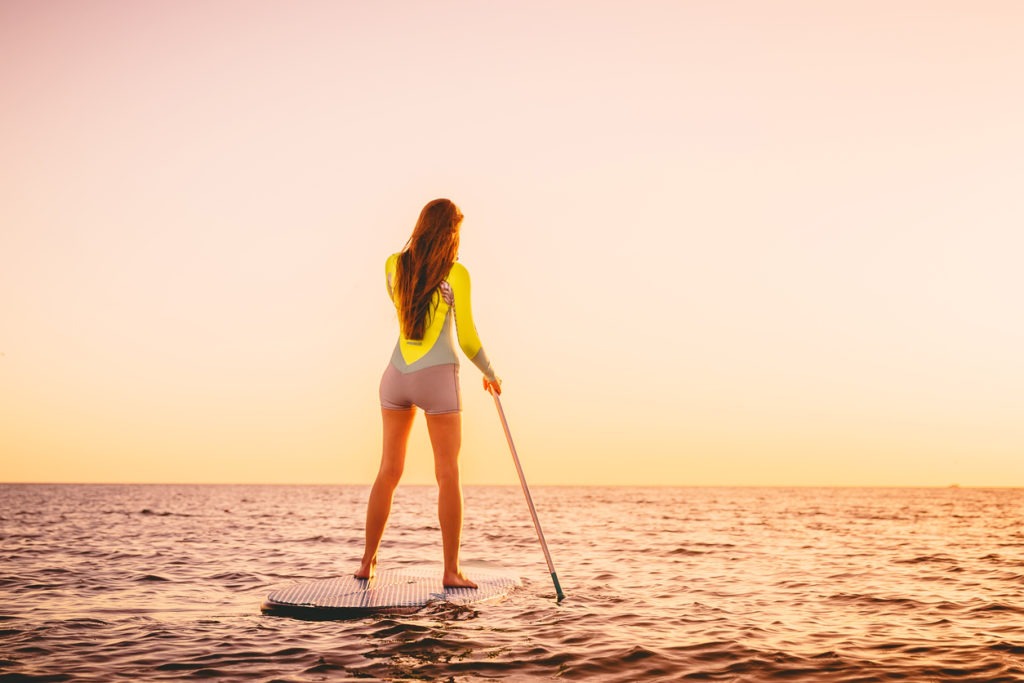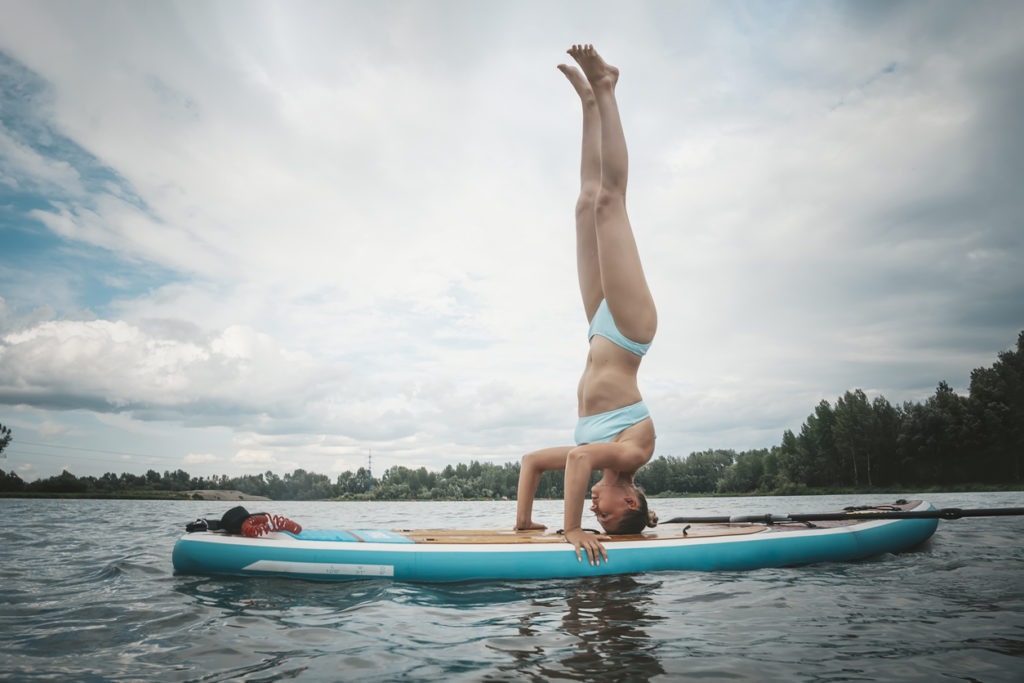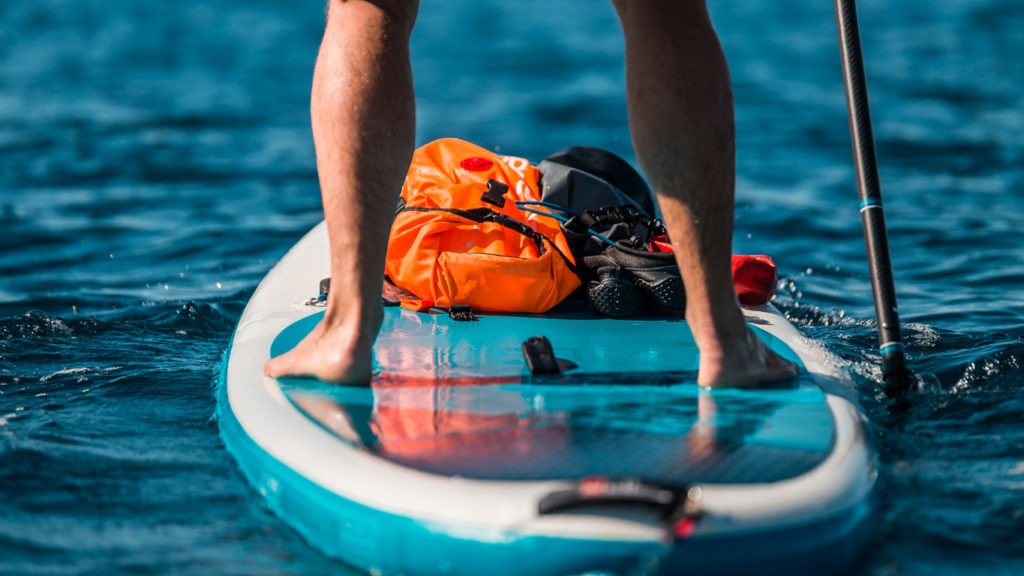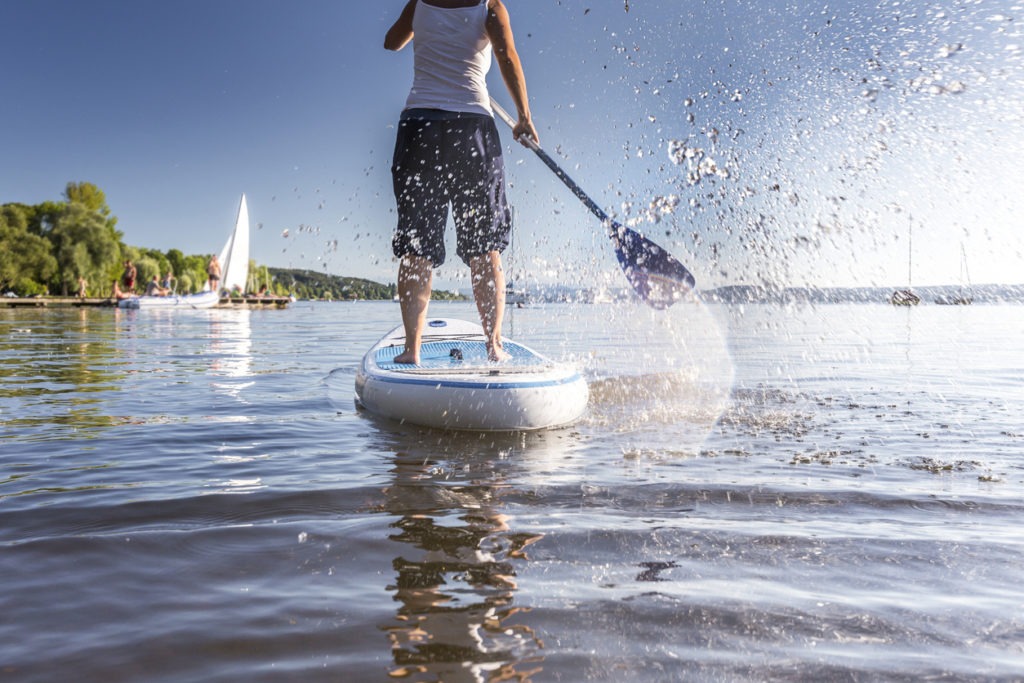Finding the best stand-up paddleboard for you can be the first step toward enjoying the sport. Boards are available in a wide range of lengths, widths, thicknesses, and constructions. Some are made for flat water, while others are made for waves, and still, others can handle both. This is a guide to help you choose your stand-up paddle board.
Stand-Up Paddle Board Hull Types
The hull, or body, of a paddle board, is critical to how the board performs in the water. The majority of SUPs have either a planing or a displacement hull. There are a few hybrid designs that combine the best features of each design.
Beginner paddlers can enjoy either hull shape, but some differences make them better for certain activities than others. As a result, you should select the hull type based on how you intend to use your board.
1. Planing Hull
A planing hull, like a surfboard, is flat and wide. It is intended to float on top of the water and be extremely maneuverable. Planing hull boards are ideal for leisure paddling, surfing, SUP yoga, and whitewater.
2. Displacement Hull
SUPs with displacement hulls have a pointed nose or bow like a kayak or canoe. To improve efficiency and create a fast, smooth ride, the hull slices through the water, pushing water around the nose to the sides of the SUP. A displacement hull requires less effort to paddle than a planing hull, allowing you to travel longer distances at faster speeds. They also track well and straight but are less maneuverable than planing hulls.
Paddlers choose displacement hulls for a variety of reasons, but the goal is always to paddle efficiently and quickly. Fitness paddling, SUP touring/camping, and racing are some of the applications.
Solid vs. Inflatable Stand-Up Paddle Boards
SUPs with a planing hull and displacement hull are available in two general construction styles: solid or inflatable.
1. Solid Stand-Up Paddle Board
The majority of solid boards have a foam core wrapped in fiberglass and epoxy. This is a relatively lightweight, long-lasting, and low-cost construction. Carbon fiber is a lighter and stiffer material than aluminum, but it is also more expensive. Plastic SUPs are less expensive, but they are heavy and do not perform as well as other materials. Some SUPs feature lightweight wood for a stunning appearance.
Why get a solid SUP:
1. Performance is your priority
The best performance on the water comes from solid boards. They travel more quickly, smoothly, and with less effort than inflatables. If speed and distance are important to you, a solid SUP is a way to go.
2. For a perfect fit
Because solid SUPs come in a wider range of sizes and finely tuned shapes than inflatable SUPs, you’re more likely to find one that fits you perfectly.
3. Stability is important
A solid board is slightly more rigid than an inflatable board, providing a more stable feel, especially when riding waves. Solid boards also ride lower in the water, giving them a more stable feel.
4. You have a place to store it
Solid SUPs can take up a lot of room. A solid SUP is a good choice if you have enough space in your garage and a vehicle that can transport it.
2. Inflatable Stand-Up Paddle Board
PVC plastic exteriors with drop-stitch construction create an air core on inflatable SUPs. They include a pump for inflating the board as well as a storage bag for when it is not in use. When fully inflated, a quality inflatable SUP is designed to be inflated to 12-15 pounds per square inch and should feel very rigid.
Why get an inflatable SUP:
1. You have limited storage space
You may not have enough space for a large solid board if you live in a small house, condo, or apartment. When deflated, inflatable SUPs are compact and can be easily stored in small spaces such as a closet or the trunk of a car.
2. You’re traveling
If you’re going on a road trip or flying, you can bring your inflatable SUP with you and do some paddling when you arrive. An inflatable can be checked on an airplane or stowed in a train, bus, or car when packed away in its storage bag. Most storage bags come with backpack straps for easy transport.
3. You’re hiking to a lake
You cannot transport a solid board if you are going to a lake to paddle. An inflatable in its storage bag is still quite heavy, but it’s your only option.
4. You’re paddling whitewater
An inflatable SUP, like a raft or inflatable kayak, is better suited to handling bumps up against rocks and logs than a solid board.
5. You like SUP yoga
You don’t have to get an inflatable for SUP yoga, but they tend to be softer than solid boards, making yoga poses more comfortable.
Stand-Up Paddle Board Volume and Weight Capacity
Your size must be accommodated by a SUP board. If the board does not displace the appropriate amount of water for your weight, you will not be adequately supported, and the board may feel unstable. Board volume and weight capacity are two factors that influence how stable you feel on the board and how well it travels through the water.
1. Volume
The volume of a paddle board, expressed in liters, indicates the board’s ability to float with weight on it. The greater the volume, the greater the weight that the board can support.
2. Weight capacity
Knowing your board’s weight capacity is critical because if you’re too heavy for it, it will ride lower in the water and be inefficient to paddle. Consider the total amount of weight you will put on the board, including your body weight and the weight of any gear, food, and drinking water that you will bring with you.
3. Volume and weight capacity as it relates to hull type
Most planning-hull boards are very forgiving, so as long as you stay under the weight limit, the board will perform admirably. Volume and weight capacity are more important in displacement-hull SUPs. SUP manufacturers spend a significant amount of time determining the most efficient position for displacement boards in the water. Overloading a displacement board causes it to sink too low, causing it to drag and feel slow. If you are too light for a board, you will not sink it sufficiently, causing the board to feel heavy and difficult to control.
Stand-Up Paddle Board Length
The length of a board has a significant impact on how it handles. Longer boards are generally faster than shorter boards, but shorter boards are more maneuverable. When deciding on the length of your SUP, keep your intended use in mind:
1. Shortboards (under 10’) are great for surfing and/or kids
The hull of these boards is almost always planing. Shortboards are easier to maneuver than longboards, making them ideal for wave surfing. Boards made specifically for children are typically 8′ long.
2. Medium boards (10’ to 12’) are ideal for all-around use and SUP yoga
The majority of these boards have planing hulls, but you may come across a displacement-hull SUP at this length.
3. Longboards (12’6” and above) are great for fast paddling and long-distance touring.
The majority of these boards are displacement-hull SUPs. They are faster than short and medium boards and have straighter tracks. A longboard is necessary if you want to paddle quickly or travel long distances.
Stand-Up Paddle Board Width
Another important factor that influences how the board handles is its width. A wider board will always be more stable than a skinny board, but keep in mind that a wide board can be slower and difficult to paddle if it is too wide for you. SUPs are manufactured in widths ranging from about 25 inches to 36 inches to meet a variety of needs. Consider the type of paddling you do, your body type, and your skill level when determining the width of your SUP:
1. Type of Paddling
Choose a wider board to have more storage space if you’re going on long tours that require you to carry extra gear, such as a cooler of food and a tent. The same is true for SUP yoga; a board that is 31 inches wide or wider will provide you with enough space and stability to perform poses. Narrower boards, on the other hand, are faster and easier to maneuver, making them popular with racers and surfers.
2. Body Type
Make an effort to match the width of the SUP to your body type. In general, if you’re small, choose a narrower board, and if you’re big, choose a wider board. This is because a smaller person can usually find their balance on a narrow board, whereas a larger person may struggle. Also, putting a smaller person on a board that is too big for them forces them to reach awkwardly out to the side to get their paddle in the water, resulting in an inefficient stroke.
3. Ability Level
If you’ve done a lot of paddling, you might feel more at ease on a narrower, faster SUP. However, someone who is new to SUP may prefer a little extra width to feel more secure.
Stand-Up Paddle Board Thickness
The main reason to consider a stand-up paddle board’s thickness is how it affects the overall volume and weight capacity. If two boards of the same length and width but different thicknesses are compared, the thicker board has more volume than the thinner one, and the higher the volume, the more weight it can support.
Stand-Up Paddle Board Fins
Fins improve the tracking and stability of a paddle board. Larger fins with wider bases and longer front edges will generally track straighter and offer more stability than smaller fins. A smaller fin, on the other hand, improves maneuverability. Most fins are detachable, allowing you to swap out fins and remove them for storage. There are numerous ways to arrange the fins on the bottom of your SUP. The following are some popular SUP fin configurations:
1. Single fin
Many SUPs include a single fin secured with a nut and screw in a fin box. The fin box has a channel in which the fin can slide back and forth. The single fin provides excellent tracking with minimal drag, making it an excellent choice for flatwater paddling.
2. 3-fin setup
This setup, also known as a thruster, promotes straight tracking on flatwater and provides good control in surf. Normally, all three fins are about the same size.
3. 2+1 setup
This configuration has a larger center fin with smaller fins on either side. This is a common configuration on surfing SUPs.
4. Fins for inflatable SUPs
Any of the fin configurations listed above can be used on inflatable SUPs. They are distinguished by the presence of either flexible rubber fins attached to the board or detachable semi-rigid fins.
Conclusion
There are numerous factors to consider before purchasing a stand-up paddle board. To find the best stand-up paddle board for you, think about how you’ll use it, how it will fit your body, and how you want it to perform in the water. The shape of the board, as well as the correct volume and capacity, as well as the proper length, width, and thickness, will be critical decision points. The decision between a solid and inflatable board is largely determined by how you intend to transport it and how much storage space you have. This guide can help you choose your stand-up paddle board.

